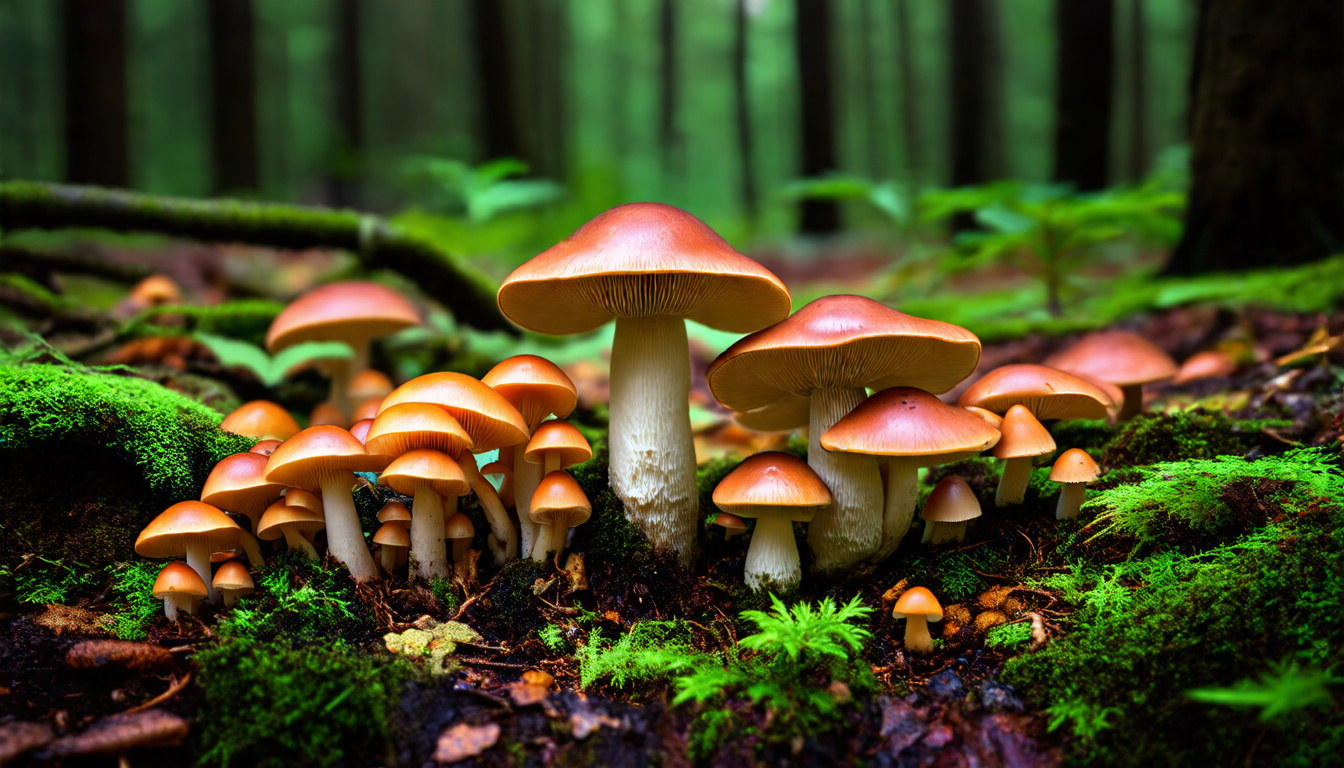If you’re stepping into magic mushroom cultivation, know that substrate matters. The substrate is the nutrient base in which mushrooms grow. This base shapes your yield, strength, and harvest health. A proper substrate can give you a rich crop. This article guides you to pick the best growing medium for success.
What Is Magic Mushroom Substrate?
Magic mushroom substrate is a nutrient base for psychedelic mushrooms like Psilocybe cubensis. It gives the fungi food, water, and a safe place to grow. Unlike loose soil that may bring germs, prepared substrates boost good growth.
Common parts of magic mushroom substrates are:
• Grains (rye, millet, wheat)
• Coco coir (coconut fiber)
• Vermiculite
• Manure or compost
• Sawdust
• Brown rice flour
Each part has its own traits. These traits affect growth speed, colonization, and ease of use.
Factors to Consider When Choosing a Magic Mushroom Substrate
Before you choose, think of these key points:
1. Nutritional Content
Mushrooms need carbs, nitrogen, and minerals. Substrates with lots of cellulose and lignin work well for some species. Grains bring rich nutrients, making them ideal for Psilocybe cubensis.
2. Moisture Retention
The substrate must hold the right water amount. Too dry, and mycelium stops; too wet, and germs can grow. Coco coir and vermiculite hold water well without becoming sodden.
3. Colonization Speed
Some substrates help mycelium grow fast. Fast colonization means less chance for germs to attack. Rye grains, for example, grow quickly and cut down on risks.
4. Contamination Resistance
Pick a substrate that fights contamination. Even with sterilization, some, like manure, risk unwanted germs if not handled with care.
5. Ease of Preparation and Cost
Some substrates need long prep or sterilization. Others are quick. Also, cost and what is near you play a role, especially on a large scale.
Popular Types of Magic Mushroom Substrate
Rye Grain Substrate
Rye grain is a favorite substrate. It has rich nutrients and holds water well. It helps mycelium grow fast but needs good sterilization to stay clean.
Brown Rice Flour with Vermiculite (BRF)
A mix of brown rice flour and vermiculite is simple and popular. It works well for small grows and for PF Tek methods. Though simple, it gives smaller crops than grains.
Coco Coir and Vermiculite
Coco coir from coconut husks mixes with vermiculite to give a moist, clean medium. It may cover the top layer or mix in bulk substrates to add water and air.
Manure-Based Substrates
Some growers mix composted manure and straw. This blend mimics the natural mushroom home. It is rich in nutrients but must be pasteurized to kill unwanted microbes.
Sawdust-Based Substrates
Sawdust works best for wood-loving species like Psilocybe azurescens. It can also be used with additives for magic mushrooms. Its absorbency is high; nutrient add-ons help give balance.
How to Choose the Best Magic Mushroom Substrate for Your Project
Your project needs guide your choice. Use these steps:
- Define your species and strain: Learn what your mushroom needs.
- Assess available materials: Pick substrates you can get easily and affordably.
- Determine your scale: Use BRF or rye jars for small grows; bulk like manure or coco coir for big ones.
- Consider your skill level: Beginners do best with simple substrates to fight germs.
- Factor in growth speed and yield: Grains grow fast and bulk gives more harvest, though it takes time.
Step-by-Step: Preparing a Basic Rye Grain Magic Mushroom Substrate
Follow these clear steps to prepare rye substrate:
- Rinse and soak rye grains for 12-24 hours so each grain hydrates.
- Simmer the grains for 10-15 minutes so water enters but they do not burst.
- Drain and dry the grains in a colander to remove surface water.
- Fill clean jars about ¾ full with the soaked rye grains.
- Sterilize the jars in a pressure cooker at 15 psi for 60-90 minutes.
- Let the jars cool before adding spores or liquid culture.
These steps lower contamination risk and help mycelium grow strong.

Advantages of Using the Right Magic Mushroom Substrate
• Better yield and potency
• Faster, even colonization
• Fewer contamination issues
• Fine moisture and air flow
• Easier to handle and prep
Choosing and prepping the correct substrate boosts your chances of success.
Frequently Asked Questions About Magic Mushroom Substrate
Q1: What is the best substrate for growing magic mushrooms at home?
A: Many suggest rye grain due to its rich nutrients and fast colonization. Beginners also use a brown rice flour and vermiculite mix as a simple start.
Q2: Can I use soil as a magic mushroom substrate?
A: Not really. Soil often has high contamination risk and uneven nutrients. Prepared substrates, like grain or coco coir, offer a controlled space.
Q3: How often should I hydrate the magic mushroom substrate?
A: Hydrate the substrate during prep and keep it moist during colonization and fruiting. Do not overdo water to avoid sogginess.
Conclusion: Choose Your Magic Mushroom Substrate Wisely for Optimal Growth
Your substrate sets the stage for a strong crop. Know the traits of different substrates and match them to your mushroom type and skill. Whether you use rye grains, a BRF blend, or bulk substrates like manure and coco coir, careful prep and moisture balance are key.
Ready to boost your growing project? Try different substrates, adjust your methods, and see your mushrooms thrive. Invest in learning, and your harvest will reward you. Start now and unlock your mushroom growing potential!

Leave a Reply